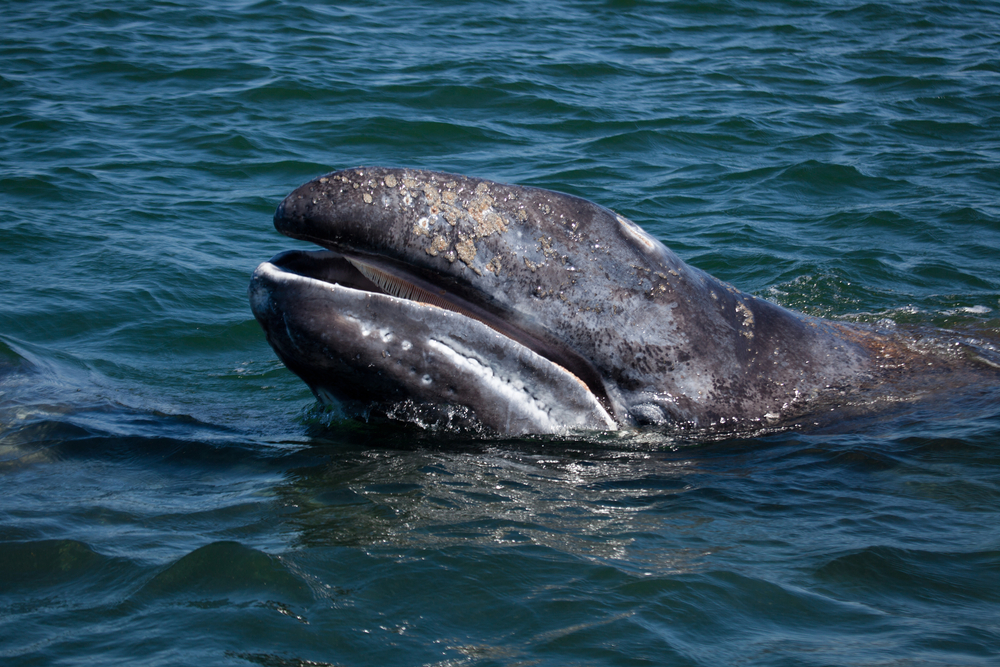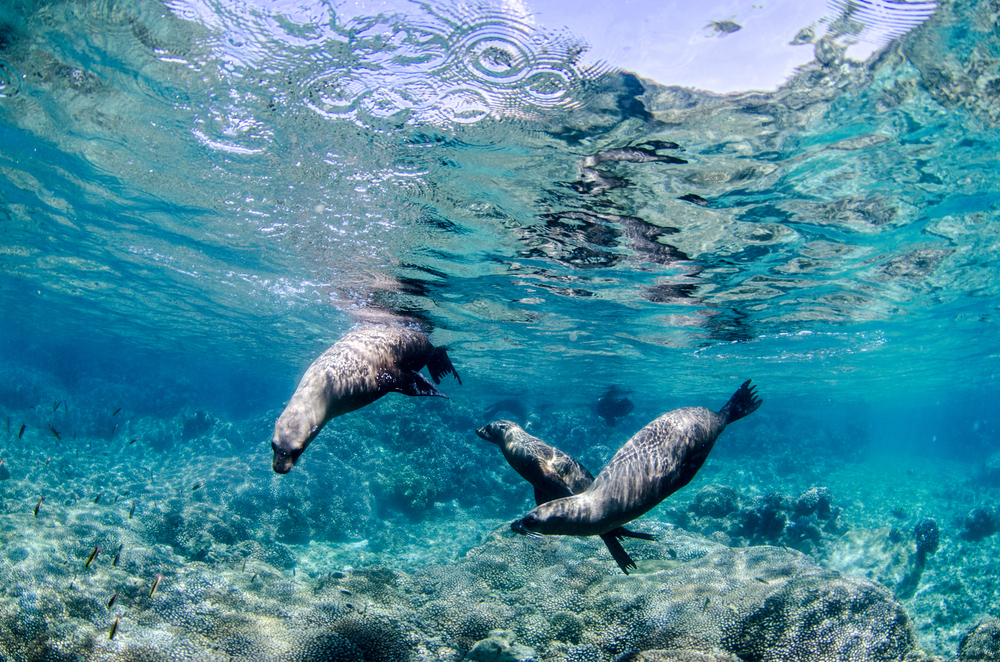

Cozy Up to the Whales in San Ignacio Lagoon
Classified as a baleen whale, this majestic marine mammal migrates between feeding and breeding grounds, such as San Ignacio Lagoon in Baja California, Mexico, during its 55 to 70 years of existence. As the sole living species in the genus Eschrichtius, the gray whale has a family line that dates back over 30 million years.
But that family line could cease to exist if we don’t take action to protect these creatures and their precious habitats. Read on to learn more about the why gray whales congregate in San Ignacio Lagoon, the ways in which organizations are trying to protect them, and how you can help -- or even experience them yourself, in Laguna San Ignacio!
San Ignacio Lagoon: A Popular Destination
Tucked into the middle of the Baja California peninsula, which separates the Pacific Ocean from the Gulf of California, San Ignacio Lagoon stretches 16 miles from the coast into the desert. As one of the primary destinations of gray whale migration, these mammals travel here in order to mate, birth their young, and prepare them for the journey to their summer feeding grounds in the Arctic.
The lagoon is divided into three sections, making it the ideal setup for whale breeding. The upper lagoon is the shallowest area where pregnant gray whales birth their young. The middle lagoon is the corridor along which mothers travel with their newborn calves to the lower lagoon, where most of the social behavior occurs.
It is this unique social behavior, that makes San Ignacio Lagoon such a magical experience.
In the late nineteenth century, whaling captain Jared Poole found San Ignacio Lagoon to be a whale breeding ground. This discovery almost led to the extinction of the Pacific gray whale, as increasing numbers of whaling ships came to take advantage of the mammal’s migration patterns. Fortunately, a collaboration between local and international players led to incredible protections for these great creatures.
Growing Support for Gray Whales
The first big push for conservation came in 1949, when Mexico began its adherence to the International Whaling Commission, protecting gray whales from commercial whaling. In 1979, San Ignacio Lagoon was decreed a refuge for cetaceans, and in 1988, Mexico established El Vizcaino Biosphere Reserve to include the lagoon. Now a UNESCO World Heritage Site and Latin America’s largest wildlife sanctuary, this protected area has allowed the whales to significantly repopulate.
But a potential threat to the breeding ground appeared in 1994. Barely a month after the gray whale had been removed from the endangered species list, Mitsubishi made a proposal to set up one of the world’s largest salt works on the banks of San Ignacio Lagoon. Fortunately, after 1 million petitions and years of activism from a coalition of fishermen, environmentalists, and scientists, the plans for the polluting 116-square-mile plant were abandoned in 2000.
An Alliance is Formed
This close call reminded the conservation community that San Ignacio Lagoon deserved special attention and protection. In 2005, ICF joined forces with the Natural Resources Defense Council (NRDC), Pronatura Noroeste A.C., Ejido Luis Echeverria Alvarez, and Wildcoast/Costasalvaje to form the Laguna San Ignacio Conservation Alliance. Working together with local communities to provide permanent protection to the lagoon, the Alliance has continued to prioritize both conservation and community development projects to protect gray whale habitat, local livelihoods, and a sense of place for local residents.
So far, we have secured 140,000 acres of key land, zoned an additional 193,000 acres of land to conservation, and protected 150 miles of coastline for public access and conservation. The collaboration among the Alliance partners has demonstrated that conservation and local economies can work together to protect habitat and create sustainable livelihoods.
How You Can Help
Despite these great achievements, there is always more that needs to be done. In order to continue protecting San Ignacio Lagoon, we need your help.
Our goal is to raise $200,000, which will fund the monitoring and protection of the lagoon for two years. You can help brighten the future of the gray whale by making a donation today.
Suscríbase a nuestra lista de correo
Manténgase en contacto con el ICF
Sea el primero en recibir información exclusiva sobre lo que hace ICF para marcar la diferencia.
